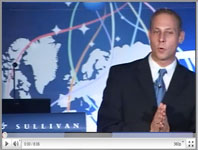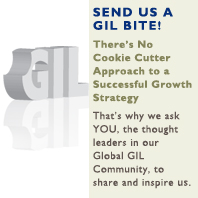 |
|
November 2010 | Vol. 3 Issue 11 |
 |
CONNECT |
 |
 |
 |
|
|
ASK THE EXPERT
Integrate Online and Offline Marketing Efforts to Continue the Conversation
 |
|
|
By Brian Carroll
Executive Director of Applied Research
MECLABS
|
|
At its core, lead generation is a continuous, congruent conversation carried through a multitude of mediums. To secure the highest return on marketing investment, you must move those conversations from introduction to close as efficiently as possible, and know precisely what took them there and why.
There is no better way to make that happen than through integrating your offline media campaigns (radio, direct-mail, print and television advertising) with your online marketing efforts. The MECLABS’ Conversion Group has proven that this drives sales better than either offline or online marketing alone:
When a major news publication launched a promotion for home delivery service, MECLABS optimized the campaign landing page to produce more online subscriptions. Of course, subscriptions increased, but the researchers wanted to understand what role an unrelated direct mail played in the results.
The publication continuously conducts direct mail campaigns and each of their direct-mail pieces had campaign-specific URLs, so they could track response. But they had not accounted for direct-mail recipients who ignore those vanity URLs, go straight to their website, and on their own find the generic, optimized landing page. So the researchers changed the landing page’s graphics and copy to align with a current direct mail campaign to see if conversion rates would increase.
The results were impressive and instructive – conversion increased by 124 percent when the landing page creative and copy matched the direct mail piece. However, after the direct mail campaign ended, the conversion rates dropped.
Considering that lead generation is an ongoing conversation, this result should come as no surprise. The direct mail piece started the conversation. While it had a unique vanity URL, many recipients simply went directly to the well-known publication’s primary website and found the generic landing page. Within five seconds of arriving there, that landing page had to assure them that they were in the right place. It had to help customers answer instantly and clearly: “Where am I?” and “What am I doing here?”
Even though it was optimized, the first generic landing page did not accomplish this. It didn’t resemble the direct mail piece, didn’t continue the conversation and it ultimately was not able to convert those leads. But minor changes to reflect the graphics and copy of the direct mail produced impressive results. The conversation felt seamless, it was relevant and it made sense – customers knew they were in the right place and knew what to do.
Furthermore, this test proved the power of offline marketing to create online engagement. The increase in subscriptions dropped off as soon as the direct mail campaign ended. The direct mail campaign motivated potential customers to action: completing a transaction online. The website content tapped into that motivation with the same, continuous relevant message. Without the direct mail piece motivating potential customers to go online to subscribe, there was little difference in the number of conversions.
While what is happening offline can enhance online results, incongruent online and offline marketing efforts will diminish them. Consider the case of a credit consolidation company that advertised extensively on cable networks. While they advised people to call directly, they also mentioned a URL they could go to for more information. Unfortunately, that URL sent viewers to a generic homepage that looked nothing like the television advertisement. The conversation was started all over again instead of continuing where the television advertisement left off. Customers were confused. They weren’t sure of where they were or what to do, so they clicked the back button. This company invested millions on a mass media advertising campaign, and could have converted many more leads by updating their website for a fraction of that amount.
From your customers’ perspective, there is no such thing as offline marketing and online marketing, only a single conversation. If that conversation doesn’t flow with logic and reason, they’re not going to continue it. To optimize your return on marketing investment, it’s critical that you be as channel-specific as possible.
Not only can online efforts enhance or diminish an offline campaign, online tools can help make sure that expensive traditional advertising campaigns are successful. If you want to know which print or out of home headline, copy, graphic and design will get the best results, test them online. It’s cost effective and fast – there’s no printing or postage, renting rooms and bringing people together for focus groups, or collecting and compiling lengthy survey results. Furthermore, you get real-time reactions and direct feedback fast. In a single day, you can create an ad, start sending traffic to the page, and determine whether it’s effective based on the response. I firmly believe if you can’t measure the effectiveness of your marketing efforts, you shouldn’t invest in them. Testing offline marketing campaigns online cost-effectively provides the proof you need to move forward intelligently.
Right now, marketers are spending about 13 percent of their budgets online, and in just four years that’s expected to increase to 21 percent. Make that investment work as hard as it can. Make sure offline and online marketing efforts consistently, continuously, congruently work together to reflect, support and advance the conversation with the customer.
|
|
| |
|
|
|
|
 |
 |
GIL 2011: Malaysia
The Global Community of
Growth, Innovation and Leadership
Kuala Lumpur, Malaysia
May 10, 2011
GIL 2011: Europe
The Global Community of
Growth, Innovation and Leadership
London, United Kingdom
May 16-18, 2011
GIL 2011: Korea
The Global Community of
Growth, Innovation and Leadership
Seoul, Korea
New in 2011
GIL 2011: Japan
The Global Community of
Growth, Innovation and Leadership
Tokyo, Japan
New in 2011
|
 |
| |
|
|
|
|
|
|
|
|
|
|
|
|
|
|
|
|
|
|
|
|
|
|
|
|
|
|
|
|
PRIVACY POLICY: We are committed to protecting your right to privacy. © 2010 Frost & Sullivan
This message was sent to you by Frost & Sullivan, 7550 IH 10 W, Ste. 400, San Antonio, TX 78229. If you would prefer not to receive further messages from this sender, please click here or reply to this email and place the word REMOVE in the subject line.
|
|


















